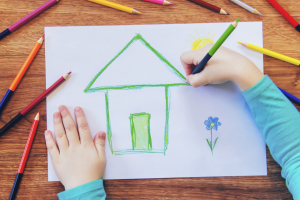
For the fourth year in a row, safety and stability remain the top presenting issues from children and young people living in South Australia’s child protection system. In fact, 43% of the requests from children and young people who sought help with advocacy from the Office of the Guardian were about the young people not feeling safe where they live – the majority from those living in residential care.
Safety and stability in their placement are just one of the key concerns raised in the latest Guardian for Children and Young People Annual Report, which was released this afternoon. Here are some of the findings from the annual report and a snapshot of the key issues that children and young people raised with us, as well as a number of strategic concerns which our office is working to improve.
We are also proud to summarise some of our achievements of the past year. Promoting the safety and wellbeing of the children and young people we work for, and helping to make their lives better, is our sole focus.
About the children and young people we work for
- Between June 2020 and June 2021, there were 4,647 children and young people in out-of-home care, an increase of 6.3% from the previous year.
- The number of Aboriginal and/or Torres Strait Islander children and young people in out-of-home care grew at a rate of 7.7%.
- On 30 June 2021, there were 654 children and young people living in non-family-based care, comprising 604 in residential care, and 50 in independent living. Of those, 223 were Aboriginal (34%); and 110 were under the age of ten years (16.8%).
- No data was provided, for public release, about children and young people in care with disabilities.
Issues raised by young people
Our advocates responded to 489 requests for assistance, of which 431 were ‘in-mandate’ and involved 607 children and young people in total (or 476 different individuals). Of these requests 162 were from children and young people themselves.
The top presenting issues which came directly from children and young people were:
- Safety and stable placement (43%)
- Participation in decision-making (22%)
- Case management and service coordination (20%)
- Contact with significant others (17%).
Strategic themes and issues
It continues to be true that many of the children and young people in out of home care are living in safe, stable and loving family environments. Sincere thanks for this are due to those who work in DCP and numerous other non-government organisations, and the carers – foster, kinship and those in residential care and other specialised placements – who care for these children and young people every day.
Unfortunately there are instances where children are clearly not safe in the care of the state or their needs are not being met. Sometimes these are one-off matters with a role for individual advocacy. But others point to serious systems failings and require vigorous advocacy to ensure recognition of particular issues and try to achieve change. Here are some of significant themes and issues that were observed and pursued by our office:
- Residential care – placement and staffing shortages, and poor matching of residents
- Reduction in large residential units
- Supported independent living services (SILS) recommission
- Phasing out of commercial care
- Health service gaps
- Access to education
- Allegations of sexual abuse of children in care
For details about each of the themes, refer to the Guardian’s Annual Report.
In 2020-2021 we also:
- Completed a full review of the Charter of Rights for Children and Young People in Care
- Started to develop a series of new resources to promote the revised Charter of Rights
- Began working with Aboriginal children and young people in care to create a culturally relevant GCYP safety symbol, a ‘Nunga OOG’
- Launched new logos and branding for GCYP, TCV and the Office of the Guardian and a new more child-friendly website
- Reported on costs and trends for children in out-of-home care, based on an analysis of the Report on Government Services, including separate reports on the circumstances of Aboriginal children in care and in detention, and school enrolment and attendance in government schools for students under guardianship compared to their age peers
- Developed and commenced the South Australian Dual Involved (SADI) Project to inquire into, and learn more about, the experiences, circumstances and needs of dual involved young people (who are both in care and have been in detention in KTYJC)
- Audited 231 annual reviews of the circumstances of children under the long-term guardianship of the Chief Executive of DCP (comprising 5% of this group of children)
Read the Guardian’s Annual Report 2020-21.
